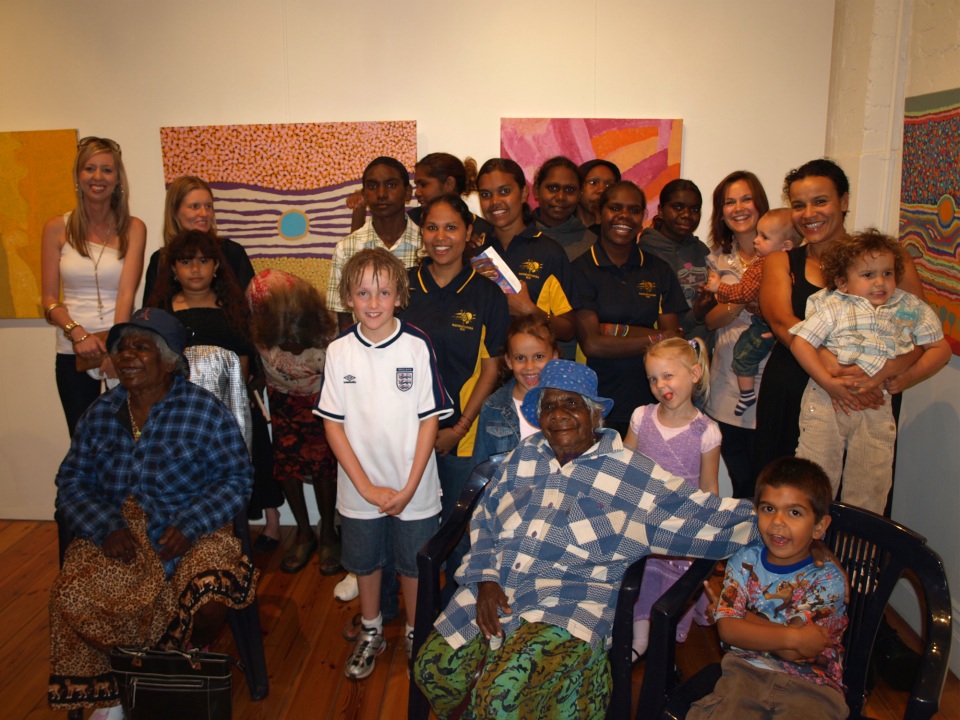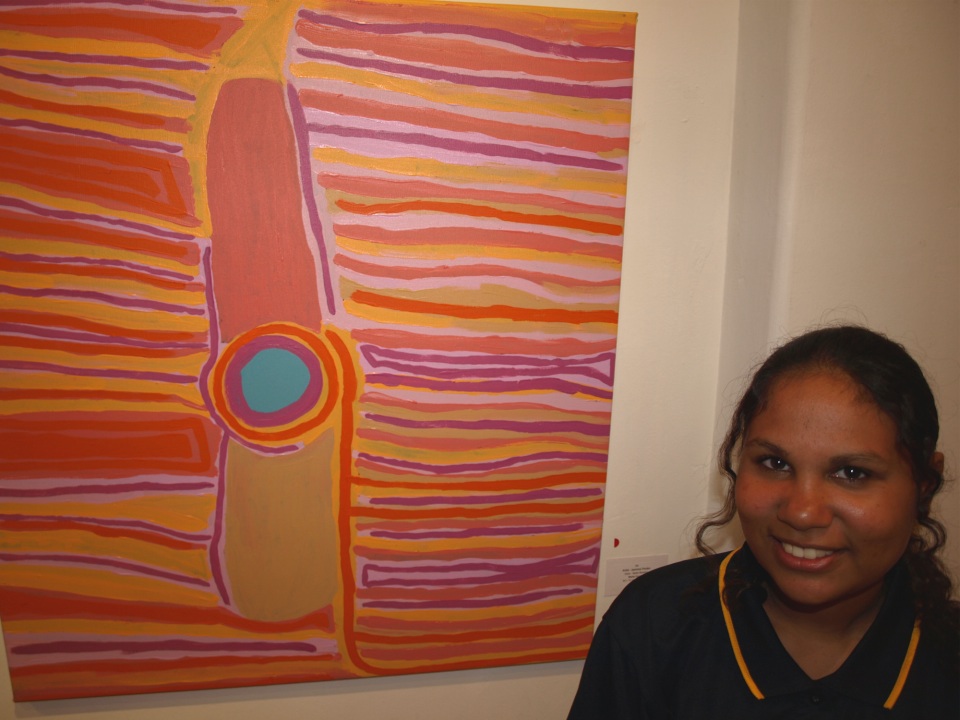The Wangkatjungka Art Story
The Emergence of Aboriginal Art
In this article Ian Plunkett talks about the role played by a school teacher and his wife and Japingka's David Wroth to bring together different generations to produce a major exhibition of work from the Spinifex Group.

The Influence of Teachers
There has been several major events we’ve had here in Japingka Gallery. I guess one of the main ones was the first major exhibition by the Spinifex Group. That was a major media event. Well over 40 artists came from the remote Spinifex community out in West Australian and South Australian border. They converged on the gallery and there were TV cameras and everything else here and the artists, incredible people. I guess the way that they are so generous and giving and open to sharing their culture made that a special event. I guess it gets back to the people and their willingness to share and the joy they have in sharing.
There’s nothing I like more than being in an exhibition opening and telling people about the story behind their paintings and the culture and seeing them share that. The pleasure I get from that is really uplifting. There has been hundreds of great moments including some in Europe and exhibitions we’ve taken to London, Paris, Madrid, Milan. We’ve got another one coming up in Paris in September, they’re all great things, introducing the style and unique culture to the world, that’s a really privileged position. I always feel privileged being able to do that.
I guess one of the most meaningful and moving moments is when we worked with the Wangkatjungka, a remote community school up in The Kimberley. My Co-Director David Wroth was instrumental in that. A lot of the people there had never left the community. They’ve never been out of their country, to their homelands if you like. They’ve never left this community. They had no idea what the outside world was like in a way other than what they saw on television.
It came about because I think the headmaster’s wife at this remote community school asked some of the school girls to decorate this new patio they’re boarding around the school and she thought it’d be a great idea if they could tell their stories. What they actually ended up doing was painting love hearts and things like that. The headmaster’s wife said, “Girls, this isn’t what I meant. What I meant was tell me- paint pictures from your country and the stories, the traditional stories.” They said, “But Miss we don’t know any of those. Only the old people know that. We’ve never been out of our country.”
Their country was in the Great Sandy Desert. It’s now known as the Canning Stock Route, very remote, very hard to get to. At that time, it just so happened that we were working with some of the Wangkatjungka elders who were painting with us and doing these remarkable paintings from their country stories about Luurn, who is the Kingfisher spirit. All the stories are associated with the water holes along with the Canning Stock Route and we just noticed that there was this disconnect. David was speaking with the headmaster and heard of the story and said, “Look, I’m working with some of the elders at the moment. Why don’t we put them together with theW.A. Education Department’s assistance?”
It just worked on so many different levels. Some of the attendance rates at the school at the time were atrocious. They were about 30%. I guess because they weren’t engaged with what was being taught to them. When we brought the elders along and they worked together with these school girls doing paintings or learning how to paint the stories behind the paintings, attendance rates went up to over 90%. The girls also had this target. We said, “Look, if you produce a body of artwork, then we’ll put on an exhibition for you down in Fremantle Japingka Gallery and this was all done with the assistance of the Education Department. “You can come down for the opening.”
I guess I shouldn’t be surprised but I was. The quality of the artwork by these young teenagers was staggering, honestly. Sometimes it was hard to tell the work of the elders work from the young teenagers work because they just had this natural visual quality. We were all blown away and so we had this major exhibition down here and this big gallery here was filled with their artwork with a few pieces by the elders as well. They came down along with the headmaster and his wife and other Education Department people. It was the most exciting event of their lives. The joy on the girls’ faces and what they got out of it. Many stayed on at school and the attendance rates at schools stayed up even after the association with the elders had finished and the project had finished.

When they were down here, I do remember just one point when we’re about to give all the speeches and we had all the girls up there with their teachers. There was an enormous crowd here for that exhibition and all their artwork sold. It was a sold out exhibition. I remember one of the girls turning to a teacher about to give a speech and said, “Miss, we’re stars.” She was just completely blown away by it and they never had that attention or appreciation. I think that’s something that the Education Department perhaps needs to look at because it worked. It gave the kids an objective.
Now, not everyone can be an artist, but it seemed to work for them. It gave them something to aim for and they also made money out of it as well, their own money and pride and self-belief. These are things that are immeasurable. I guess that would have to be one of the best moments here at Japingka.
